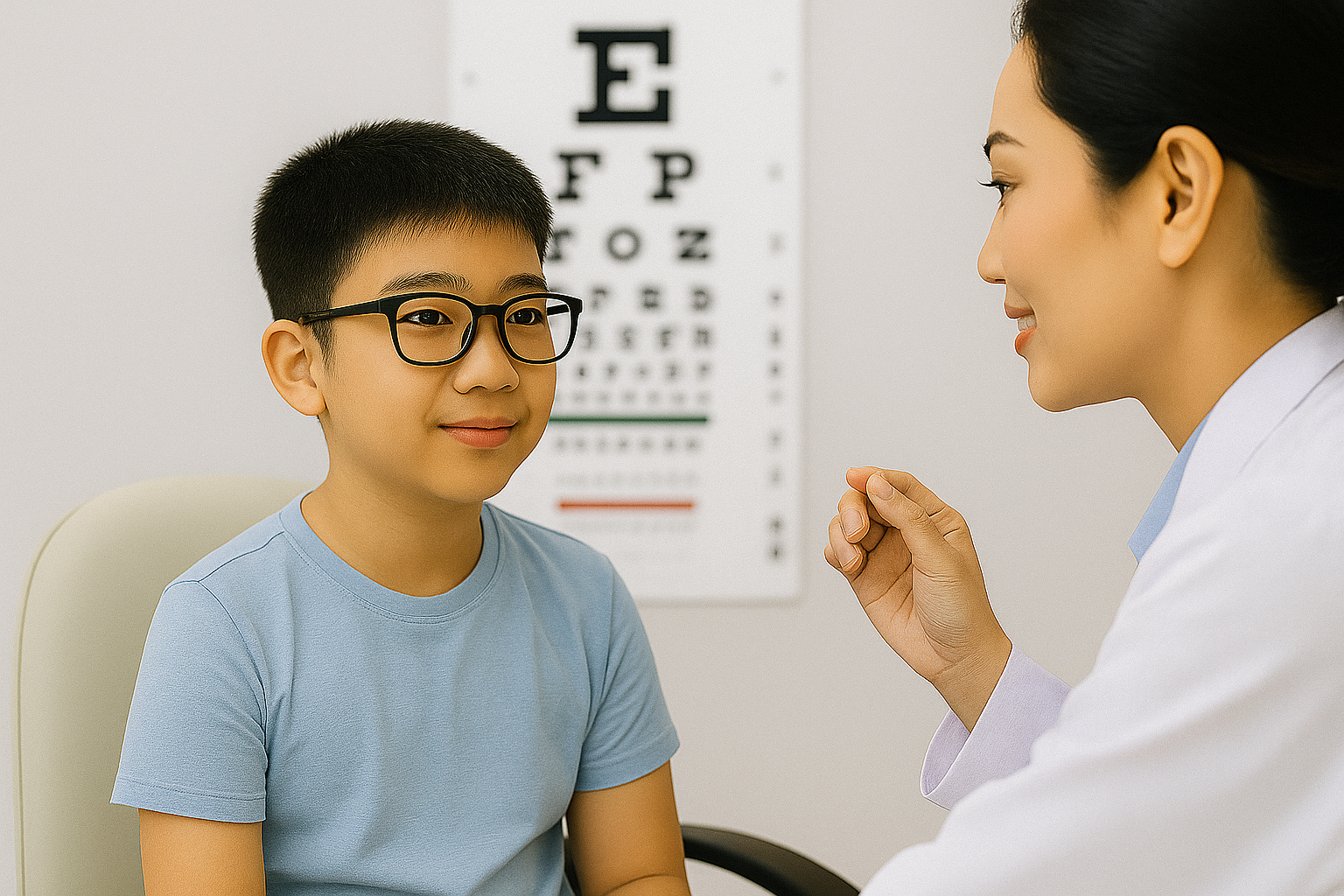Protect your family’s vision today

As we age, we may undergo natural changes, and our vision is no exception. One common age-related vision change is presbyopia.
According to the Singapore National Eye Centre (SNEC), age is one of the main causes of presbyopia, and it could start around one’s late 30s. This condition affects the eye's ability to focus on close objects, making tasks like reading small print more difficult. As a result, you might find yourself squinting at restaurant menus or holding your phone farther away to read messages. These could be early signs of presbyopia, indicating the need for corrective measures.
Presbyopia is the gradual loss of the eye's ability to focus on nearby objects. This happens as the eye's lens, responsible for focusing light onto the retina, becomes less flexible with age. This loss of flexibility, which is what causes the lens’ inability to change shape and accommodate near vision, may lead to blurred vision when looking at things up close.
It's important to note, however, that lens hardening is a normal part of the ageing process, typically beginning in the early 40s.
The signs of presbyopia often develop gradually and may include:
If you experience these symptoms, scheduling an eye test in Singapore is essential to rule out other potential causes, and understanding your condition is important.
Having your eyes checked regularly is important for early detection and management of presbyopia. During a presbyopia screening at an eye care centre, the optometrist will:
There are several presbyopia management options available in Singapore, including:
One of the most common corrective lenses for presbyopia is reading glasses, which help magnify objects or words for tasks. They use single-vision lenses designed to magnify near objects, making reading and close-up tasks easier.
Pros:
Cons:
Multifocal lenses use distinct zones for different distances, which could help those with presbyopia and even those with myopia or nearsightedness. Bifocals have two zones (near and distance), and progressive lenses offer a seamless transition between zones.
Pros:
Cons:
Similar to progressive glasses, multifocal contact lenses provide different zones for near-, intermediate-, and distance vision.
Pros:
Cons:
This approach involves wearing one contact lens to address your farsightedness and the other for your nearsightedness.
Pros:
Cons:
Orthokeratology involves wearing specially designed contact lenses overnight to reshape the cornea temporarily. This reshaping could help address vision problems, including presbyopia, allowing for improved vision during the day without the need for glasses or contact lenses.
Pros:
Cons:
LASIK, also known as laser-assisted in situ keratomileusis, is a procedure that involves using a cutting laser to change the shape of the cornea, which could potentially help with presbyopia. In most cases, it uses the same philosophy as MonoVision contact lenses, where one eye is corrected for distance and the other is for near.
Pros:
Cons:

While there are minimal chances of preventing presbyopia from occurring, certain lifestyle habits can help manage its symptoms and promote overall eye health. Here are a few ways on how to manage the progression of presbyopia:
Poor lighting conditions force your eyes to work harder, which can exacerbate the effects of presbyopia. As such, adequate lighting is essential when reading or performing tasks that require close focus. Opt for bright, evenly distributed light sources, like task lamps or natural daylight, to reduce strain and improve visual clarity.
Prolonged periods of reading or screen time can lead to eye fatigue, especially if you're struggling with presbyopia. Consider practising the 20-20-20 rule: every 20 minutes, take a 20-second break to look at something 20 feet away. This helps your eye relax its muscles and can minimise discomfort caused by prolonged close-up tasks.
As smartphones, tablets, and computers have become a prominent part of your daily life, it's important to adjust their settings to reduce strain on your eyes. A few ways to do so is to increase the font size and adjust screen brightness to comfortable levels. Additionally, consider using blue light filters or screen protectors to minimise your blue light exposure, which could contribute to digital eye strain.
Schedule regular eye check-ups, especially after age 40, to monitor changes in your vision. Early detection of presbyopia and other age-related conditions can help you manage symptoms and find suitable corrective solutions, such as reading glasses or multifocal lenses.
Recognising and addressing presbyopia is crucial for maintaining clear vision and enjoying life to the fullest. If you're experiencing symptoms of presbyopia, don't hesitate to seek professional advice from an eye care specialist. They can help you explore the various vision correction options available and recommend the best solution for your individual needs.
Comments will be approved before showing up.

Late-night homework, endless tuition, and hours of gaming — today’s screen-heavy lifestyle can quietly speed up your child’s myopia. Learn how regular 3-monthly eye reviews, tailored myopia control treatments, and professional guidance can slow progression, protect long-term eye health, and help kids build healthy vision habits for life.

Think your progressive lenses shouldn’t cost more than your phone or laptop? Think again. Premium progressive lenses are precision-engineered tools tailored to your exact vision, lifestyle, and frame — using cutting-edge technology that rivals any modern device. In this article, we break down why these lenses come with a higher price tag, and why they’re worth every cent for daily comfort, clarity, and performance.

Worried your child’s myopia keeps getting worse each year despite wearing glasses? Discover how myopia control lenses like MiYOSMART, Stellest, and ZEISS MyoCare—available in Singapore—can help slow progression and protect long-term vision. Learn how to choose the right option for your child, based on clinical evidence and expert guidance.